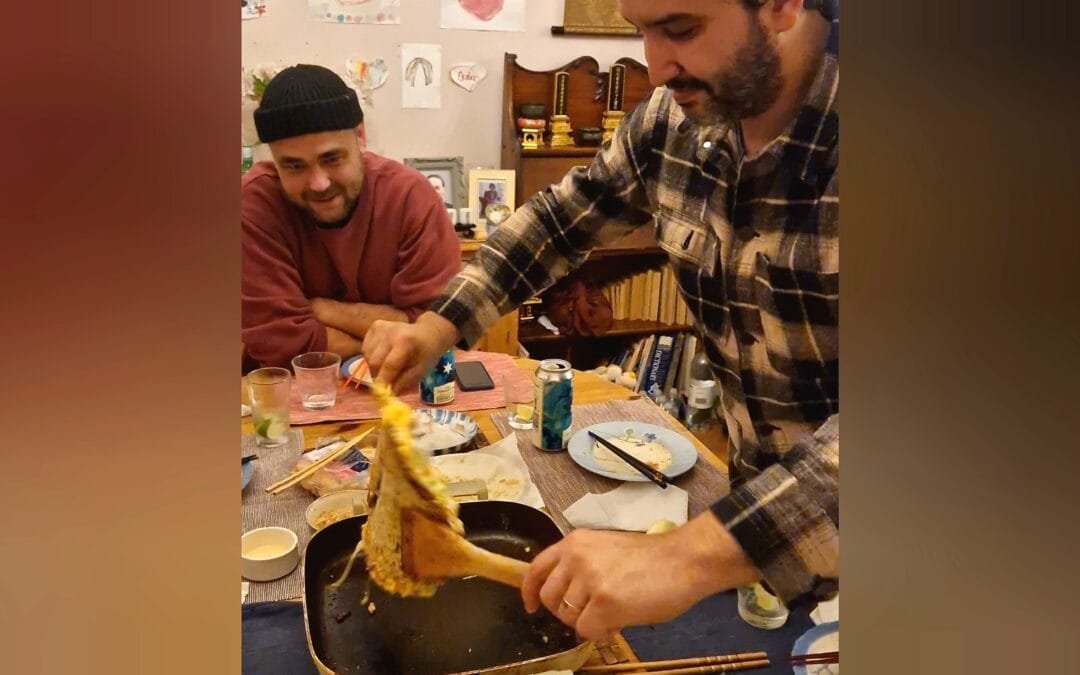Article by Ivan Melo
“The Japanese way of teaching and learning anything, whether it is art or making sushi or practicing Zen, is a lot of watching, eventual doing, being super confused and yet not asking questions, having someone inevitably correct you, and then continuing on”.
-Gesshin Greenwood’s “Bow first, ask questions later”.
In my first Aikido class, my sensei took me to the side, showed me mae ukemi (forward roll) just once, looked at me expecting my attempt, I tried my best to do what I saw. Once we both agreed I didn’t die in that first attempt I was left to do it again and again. When demonstrating techniques, he’d only show them 4 times in front of the class (omote and ura).
When instructions and corrections were made during training, I was taught to say “hai, sensei”, which means “yes, teacher”. Those would be followed by a bow, whilst saying “domo arigatou gozaimasu”, which is a very polite way to say “thank you” in Japanese.
As my training continued, I understood that the fastest and easiest way to learn was to just say “hai sensei” as sincerely as I could and work on whatever was asked of me – even if I didn’t fully comprehended how or what. It demanded of me to continuously reflect on the matter sensei raised with me. I also noticed that people who would try to negotiate their point of view with sensei made very slow progress and often, no progress at all.
To sincerely say “hai, sensei” requires a drop of one’s ego mind, to accept what’s been presented, whether as a critique or as a compliment.
To receive a compliment doesn’t mean you have achieved perfection, but is simply another point for reflection so you know that your direction, for the time being, is correct. It’s especially helpful when you lose your way, so you might know how to return to the path. Accept a compliment, say “hai sensei” and get on with it.
Likewise, a criticism is a warning letting you know you veered off the path, a little or a lot, but it doesn’t mean you are doomed either (well…usually). Say “hai sensei”, address it and move on.
When we are in the midst of training, we don’t really know what our teacher is looking for and getting a technique “right” is many times a minor goal. As your sensei, sometimes all I expect from some of you is to get your back straight or release the tension in your shoulders. Sometimes I want someone to own what they do know and work something out for themselves, even if that means they’ll get the proposed technique wrong for a while.
Hence why in class, to discuss the “ifs and buts” should be avoided, it’s why if you need to instruct a fellow aikidoka, do the bare minimum or ask the sensei when they come by. As a point for reflection, have you ever considered you could possibly be wrong and instructing a beginner who was actually getting it right before?
In our hyper individualistic society, we are encouraged and rewarded to place ourselves in the center of the world. In traditional learning, one places themselves under a hierarchy led by those who came first and at the top, the sensei. Ideally, when you come to the dojo (the place to practice a path), you come open to learning; it implies being open to transformation, which often means to let go of what gets in the way of your learning and to accept what someone more experienced than you is teaching or saying.
As the quote in the beginning of the article attests, this way of teaching and learning is embedded in all of Japanese culture. During the Christmas holidays, we were making okonomiyaki at Cathy sensei’s family home (and here I’m addressing her as sensei, because she is also your teacher – it’s not like we call each other sensei at home). Put it simply, okonomiyaki is a big (and delicious) savoury pancake, where you can put all sorts of toppings on it. It is especially good in Osaka, where they are from.
Her mum, whom you can see on Thursdays during weapons class, gave me some instructions about the preparation of the dish the night before. She showed it to me just once and quickly.
Next day came and as we are about to start making it, she asked me to do whatever I supposedly had learned the night before. When I hesitated, trying to remember the steps, I got an impatient look followed by “you should know already, I showed you yesterday”. Since I couldn’t do the more intricate part of the preparation, I was then allowed the role of flipping the okonomiyaki, which is probably the easiest job (albeit, super important too).
All I could say was “hai sensei”, and hope I can get it right next time.

